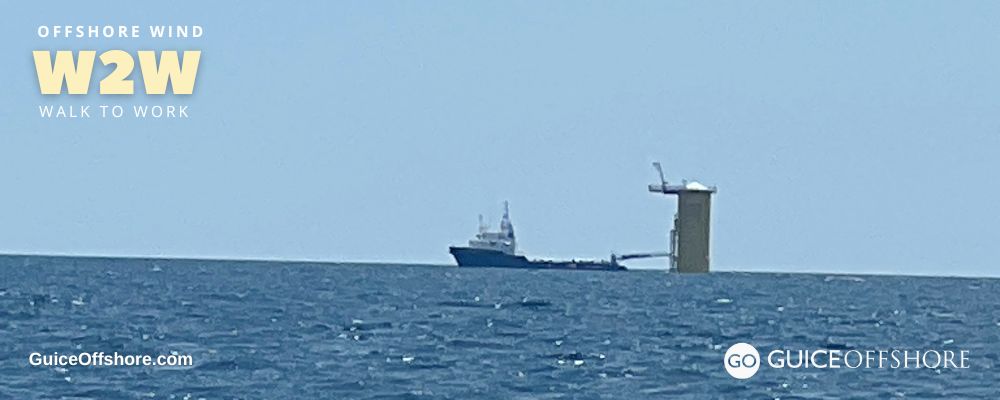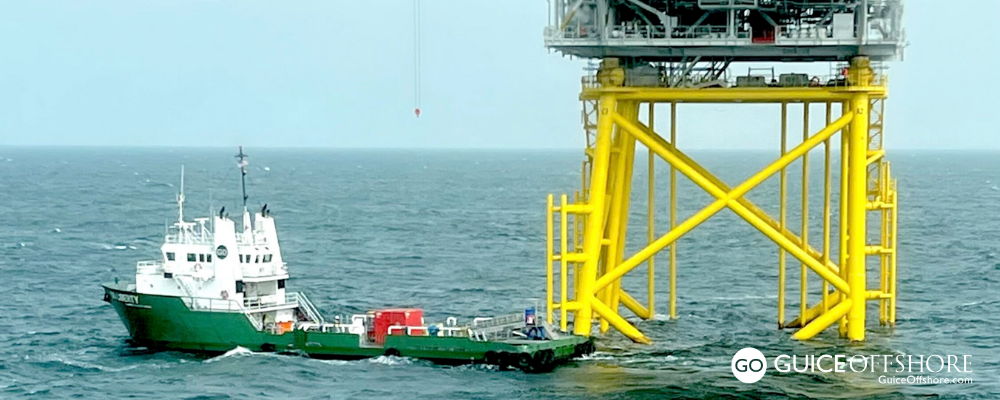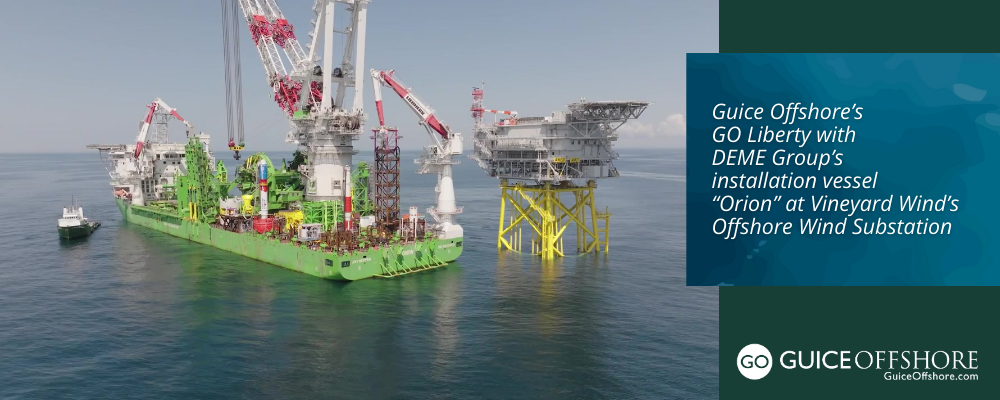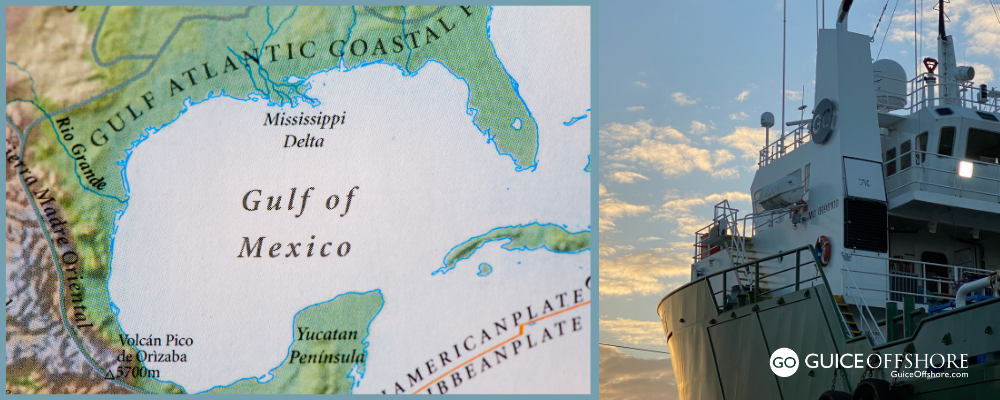Planning for U.S. offshore wind was well underway in the United States by the time the National Academy of Sciences Transportation Research Board released its special report on “Worker Health and Safety on Offshore Wind Farms” in 2013. At the time, it was expected that offshore wind farms would soon be under construction, and that health and safety rules would need to be in place to protect the skilled workers required to build, operate, and repair them.
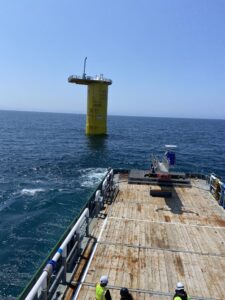
A major portion of the report focused on applying oil and gas industry best practices to ensure the safe transfer of technicians from vessels to offshore wind structures, particularly in harsh offshore conditions.
Fast forward to 2023 as the first full-scale commercial offshore wind farm has now started construction off the coast of Massachusetts. Guice Offshore has played a key role by providing both multi-purpose and mini supply vessels for the project, but also successfully developing a unique method of “walk to work” crew transfer that is creating both safer conditions for workers and a more nimble and cost-effective way of doing it for offshore wind developers.
“While ‘walk to work’ isn’t new, the way we’re doing it definitely is,” Guice Offshore Vice President David Scheyd said. “This is the first time it’s ever been applied like this on a U.S.-flagged mini supply vessel and we’re very pleased with how well it’s operating.”
Traditional walk-to-work (W2W) gangways are typically substantial assemblies that require a larger vessel to carry and implement. Guice Offshore has crafted an articulating one that operates with a motion compensating system and clamps to keep the walkway firm and steady against the sides of an offshore wind structure as it moves with the motion of the vessel.
While similar in nature to offshore oil platforms, the challenge of working on and from vessels and in and over the water with massive offshore wind turbine equipment introduces additional variables, Scheyd explained.
“You usually can’t use a crane near an offshore wind structure to transfer crew, for example,” Scheyd explained.
Unlike offshore oil platforms, offshore wind structures are essentially unmanned facilities that can be operated remotely and only required scheduled routine maintenance once they are constructed and operational.
With Guice Offshore’s lighter, more flexible crew transfer W2W system, that maintenance can be more easily and cost-effectively performed with a smaller vessel such as those in the Guice Offshore fleet, which is Subchapter L & I certified by the U.S. Coast Guard.
Using the new W2W system, Guice Offshore vessels can also function as “floatels,” housing technicians nearby the wind farm who can more easily return to the vessel for needed components, tools or periodic breaks to minimize travel time back and forth to the structures.
Respected in the maritime industry for its “GO Safely” corporate culture of shared values in safe operations, Guice Offshore is committed to an accident and injury-free workplace.
“It’s about everyone going home safely at the end of the day,” Scheyd said.
Guice Offshore Has the Jones Act-Qualified Vessels To Help Meet America’s Offshore Wind Industry Needs
Guice Offshore’s growing fleet of Jones Act-compliant, dynamically positioned offshore supply vessels, mini supply vessels and platform vessels is well positioned to help meet our nation’s wind energy infrastructure installation and service goal deadlines, whether it’s crew transfer, service, cable laying, subsea work like scour protection or equipment transportation.
Guice Offshore vessels are well-maintained, well-manned and feature ample accommodations and sought-after equipment such as A-frames, cranes, winches, moonpools, deck sockets and essentials to facilitate a spectrum of highly specialized offshore projects.
We hold strategic partnerships throughout the United States and maintain our highly capable vessels in accessible locations for quick response to myriad needs of the many specialty industries we serve, including Offshore Wind.
Headquartered in Covington, Louisiana with an operations base in Lafayette, Louisiana and a northeastern Rhode Island office, Guice Offshore operates a 15-vessel fleet of U.S. Flag offshore vessels that includes Subchapter L & I mini supply vessels, multi-purpose and platform vessels in the 150-ft, 170-ft and 205-ft class with DP1 and DP2 certifications.
Guice Offshore operates from coast to coast in North America and select international locales.
Additionally, our subsidiary, GO Marine Services, a catering and offshore labor contractor, supports mission requirements that help minimize mobilization time and expense for Guice Offshore customers with special services like marine riggers, roustabouts and certified protected species observers in compliance with marine mammal regulatory requirements.
For charter inquiries, please contact David Scheyd at david.scheyd@guiceoffshore.com or (985) 273-2769.
